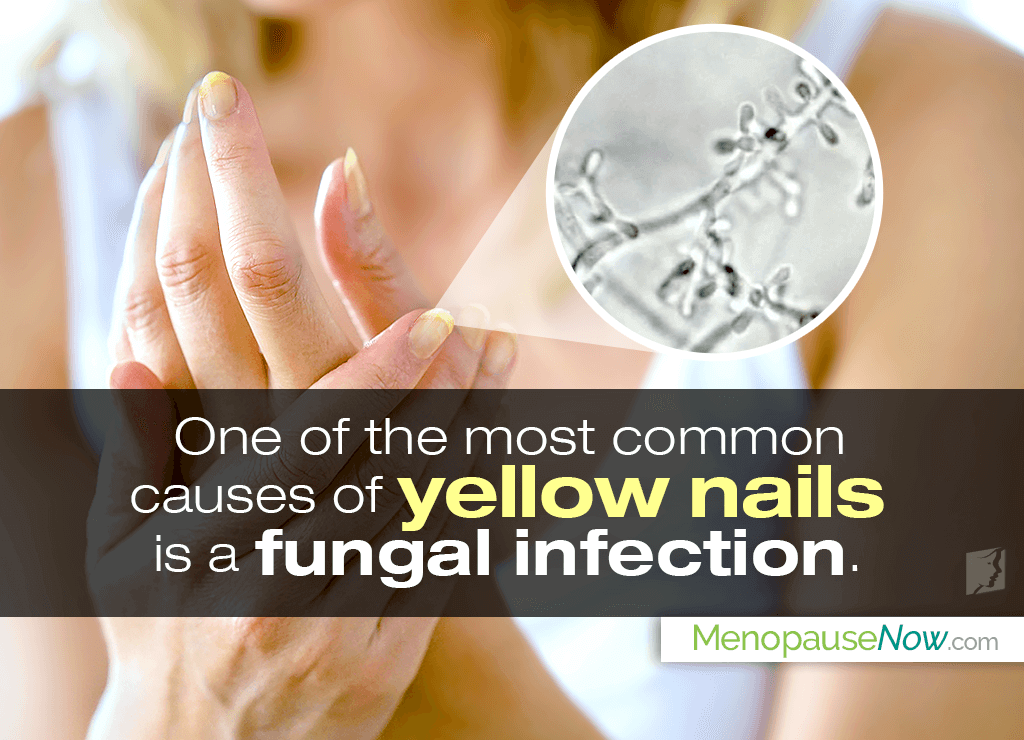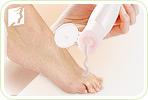Yellow nails are characterized not only by the yellowish discoloration of the nail bed, but also dryness, splitting, and chipping that can reduce nail growth and provoke other issues if not addressed.
Continue reading to find out answers to your frequently asked questions about yellow nails as well as what you can do to finally have optimal nail health back.
What is Causing my Yellow Nails?
One of the most common causes of yellow nails is a fungal infection. If the infection is allowed to progress, the nail bed may recede as the nails begin to thicken and crumble.
Yellow fingernails can also be due to the use of harsh chemicals or dyes, such as being stained from nail polish, or a vitamin or mineral deficiency, which is often the case with brittle nails.
In rare cases, having yellow fingernails could indicate the presence of a more severe health condition, such a thyroid disease, lung disease, psoriasis, yellow nail syndrome, or diabetes.
Could They Be Related to Menopause?
Menopause is a transformative time characterized by the consistent fluctuation of reproductive hormones as ovarian hormone production comes to an end.
As such, it can be said that the principal reason for yellow nails during menopause is hormonal imbalance as estrogen is responsible for proper hydration and general health of the nail bed.
How Long Will The Nails Take To Heal?
Recovery time for yellow fingernails will depend upon the root cause of the problem as well as how soon initiative is taken to resolve this issue.
Accordingly, it can take anywhere from as little as a week to as long as several months in order to have healthy, strong nail beds again.
So, How Can I Treat Them?
Treating yellow fingernails revolves around handling the underlying cause for optimal and long-term treatment success.
If caused by an infection, tea tree oil and oregano oil have been scientifically proven to combat nail bacteria and fungi. Mix either with a carrier oil before application.
Whereas, if due to harsh chemicals, the best approach would be abstinence from using said products. Also, consider the use of hydrogen peroxide mixed with warm water and baking soda to remove stains.
Align other yellow nail treatments with your doctor if due to a more severe health condition.
And If I'm In Menopause?
Menopausal women would do well in solving the hormonal imbalance at fault.
In order to do this, they should pursue natural and effective brittle nail treatments that focus on the implementation of lifestyle adjustments - such as an optimized diet rich in nutrients essential to nail health, like omega-3 fatty acids, calcium, protein, and iron - paired with alternative medicine of phytoestrogenic herbal supplements or hormone-regulating supplements. Either directly addresses the hormonal imbalance.
Key Takeaways
While causes of yellow nails range from fungal infections to harsh products and deficiencies, one of the most common for menopausal women is the hormonal imbalance taking place in their bodies as reproductive years wind down. Without a doubt, recovery time and treatment options will depend upon the underlying cause, but for menopausal women, the sooner they address the imbalance causing yellow fingernails through lifestyle changes and alternative medicine, the sooner they will enjoy optimal results.
Sources
- Chaftar, N. et al. (2016). Comparative evaluation of the antimicrobial activity of 19 essential oils. Advances in Experimental Medicine and Biology, 901, 1-15. doi: 10.1007/5584_2015_5011
- Flores, F.C. et al. (2013). Antifungal activity of nanocapsule suspensions containing tea tree oil on the growth of Trichophyton rubrum. Mycopathología, 175(3-4), 281-286. doi: 10.1007/s11046-013-9622-7
- National Organization for Rare Disorders. (2018). Yellow Nail syndrome. Retrieved March 5, 2019, from https://rarediseases.org/rare-diseases/yellow-nail-syndrome/




